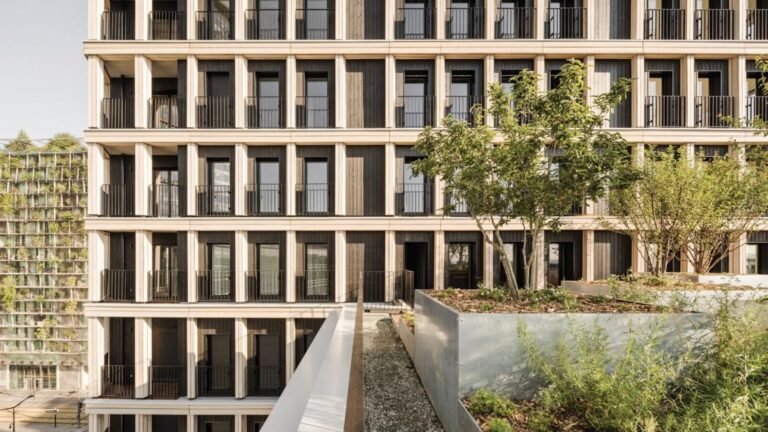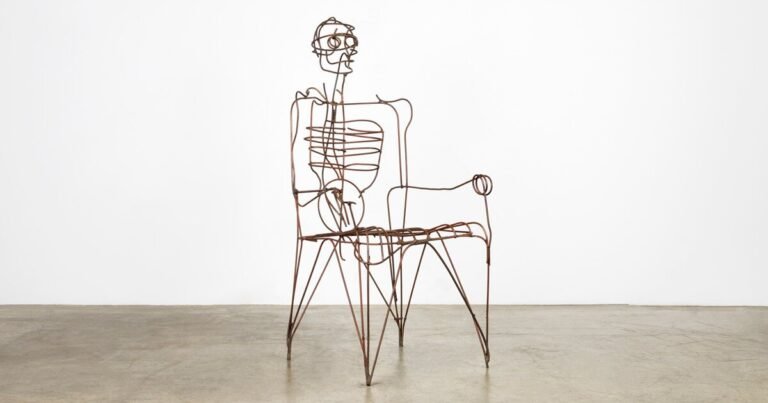Architecture Between a Glorious Past and a Questionable Present: Interview with Greek Architect Andreas Angelidakis
Architecture Between a Glorious Past and a Questionable Present: Interview with Greek Architect Andreas Angelidakis

How might your persona or act differ if you were to put yourself before society’s expectations and limitations, embracing your queerness and preferences? Looking into the impact of individuality, we talked with Andreas Angelidakis, an architect to who refers to himself as “an architect who doesn’t build”, but views architecture as a site of social interaction, creating works that reflect on the urban culture by mixing ruins, digital media, and psychology to better understand the power of finding different design paths.
Based in Athens, Angelidakis explores the idea of ruin in ancient and contemporary societies. To present a sharp perspective on our present and possibilities for the future, the Greek architect adopts a language that brings together virtual and physical elements in an artistic practice. This practice questions the world through a gaze that cuts across the past and dissenting cultures.

Victor Delaqua (ArchDaily): In the text “Me as a Building” you relate intersections between understanding your sexuality and the way you see architecture and the city. Can you talk a bit more about this?
Andreas Angelidakis (AA):
During a session with my therapist back then, I wondered why I keep coming back to unfinished or illegal buildings, studying their form and economic function, and so on. And Mr. Bakirzoglou replied “perhaps because you grew up as “unauthorized ” too, you wanted to wear your mom’s dresses and play with your makeup.
At that point, I began to see Athens as a city that made her way through people’s expectations of her, a classical ruin, when in fact she was a city that wanted to become something other, and obviously, the geopolitical decisions of the post-war Marshall Plan reconstruction program had shaped her. In the text, while I am musing about how Athens had to build herself up, had to repeatedly re-negotiate her identity between a glorious past and a very questionable present, I realize that I might be talking about myself, the glorious past being childhood where I experienced the world more or less outside societal professional or personal expectations. Childhood is the moment in our life when we have yet begun to try and “be” somebody, we just are. As such it seems a glorious moment of personal freedom, inner power, being effortlessly yourself in the most free way. Basically, childhood is the moment in your life when you are slaying, living, or as Paris Hilton would say, you are Sliving. And one might say the same for the 5th century BC Athens, she was totally slaying it, gave birth to the western world (oops), and generally living her best life. Little did she know that as the centuries passed, she would be sold as a slave to the Ottoman Empire, then scammed into becoming a nation rather than a carefree colony, finally finding herself the pariah of Europe in the 2010s.

Quite the fall one must say, but perhaps through hardships, one finds oneself. The way that I think about cities or buildings, is the way I think about my own progress in life, doing the work with different types of psychotherapy, energy healing, Pilates, tarot cards, you name it.
Finding your way as a queer man has its problems because society is not queer. Maybe the type of city that Athens wants to become, does not recognize herself in her parents, she wants to be different.
(VD): In 1992 you were in charge of the Factory Nightclub project in Athens, and you said you treated the renovation of the space as a “kind of urban forensic drag-queen remake-renovation”. Could you talk a bit more about that? And how does the queer experience play into your architectural practice?
(AA): I had just graduated with honors from Sci-ARC, which at the time was the hippest school of architecture, and a friend and PR Agent introduced me to the nightclub mafia of Athens, to design nightclubs.
The mafia misters showed me a shut-down kebab place close to Omonia square, which they wondered what kind of nightclub I would turn it into, in such a seedy neighborhood. I convinced them that an underground gay house music club was the way to go. They shrugged ok and I was off.

My first instinct while thinking on how to actually fabricate something underground, which is somehow all about not being fabricated, authentic and rough, just like the boys you like. So creating a décor inside the kebab place seemed a bit ridic, and I wanted the space to have a DIY quality to it, to become a space that the tribe made for themselves. I had the kebab place painted a glossy silver, to make the kebab random details into something a bit more abstract. Painting over an existing space gives it a surreal, even George Segal tableaux vivant vibe but without the humans. I found some sofas in the space and had them reupholstered in orange fluorescent techno-ish fabric, and left the basement refrigerator area completely untouched, as this would be the darkroom floor of the club.
The process of turning the kebab place into a gay club was to me like a drag queen makeover, just paint and a few phosphorescent detailing. Obviously, this was the club that I wanted to be going to, so I just manifested it for the client, and Factory became the hottest club that all the old gays remember from the 1990s, even if it was open for just over a year. Like a nighttime butterfly and almost all the gays I know, she went too close to the light and burned themselves out. Just like Crystal Meth and G for the gays today.

(VD): Your work deals with the notion of ruin. This has a big impact when we think of a society that values monumentality so much while seeing itself more and more in “ruination”. How can looking at ruins be an important source for conceiving new perspectives or concepts?
(AA): I guess ruin-adoration comes from the drama that comes from a ruin reminding its admirers of a grandiose past and its subsequent demise all at once, so the conflicting messages must be a kind of high.
At the same time ruins in a way help one drop their agonizing ambitions, because if even broken buildings are worth attention, then maybe so are you. I think it’s good to see the future as a place where we no longer wish to be anybody other than who we already are.
Right now I’m working on the Center for the Critical Appreciation of Antiquity, at the Espace Niemeyer in Paris in October, commissioned by Audemars Piguet Contemporary. The project is about negotiating the binary between antiquity and the present, whereas Oscar Niemeyer’s architecture famously tried to predict a future that never came, but one we seem curiously nostalgic of. I guess I could not resist queering Mr. Niemeyer a little bit, because he is a revered figure, even though let’s face it, Lina Bo Bardi gave us a more nuanced and engaged vision of Brazil and the future. Antiquity in this case is cast in the role of our civilizations and perhaps our own Childhood.
So it’s basically a self-portrait, of a queer man trying to feel the freedom of being a child again, before society’s expectations and limitations. The Center for the Critical Appreciation of Antiquity looks at and examines the little fragments of your childhood civilization, which might inform the reality you’re building today.

(VD): Switching roles between architecture, art, and curatorship, you have a practice that is blurring the lines between fact and fiction. How does merging these concepts impact your work and help you create new points of view for an ordinary life?
(AA): I think that whenever you blur the boundary between two roles, you come closer to what is meditation is a flow state. For me blurring the lines between fact, fiction, architecture, etc is close to such a flow state, though unfortunately, I haven’t figured out how to turn that into an emotional or physical flow, yet.



